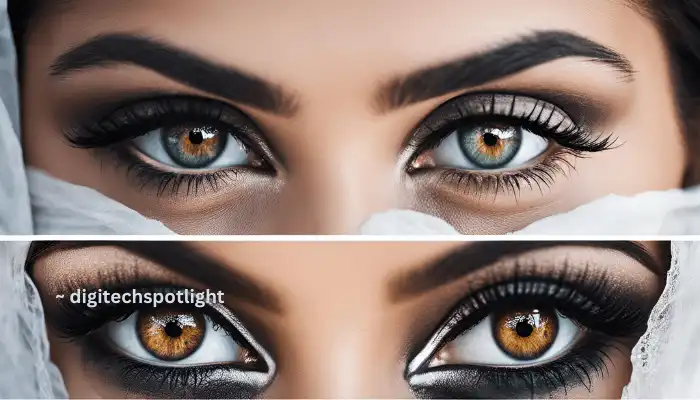Since AI models have become advanced at creating images, and scammers often use AI techniques to trick individuals, distinguishing genuine faces from those created by AI is becoming increasingly challenging. This AI tools are now such a good thing that it’s difficult to distinguish between what’s authentic and what’s not, causing questions about the possibility of deceiving people of fake face images.
Researchers from The University of Hull in the UK think they’ve discovered an effective method to identify the AI fakes, by watching closely the eyes. Their unique approach is based on light reflections within the eyes, an aspect which AI is unable to reproduce accurately.

The challenge of spotting Artificially-Generated Faces
The majority of the tools and methods to identify AI-generated facial expressions don’t always perform flawlessly. The new approach that was developed by Hull researchers is intriguing and practical. They’re together instruments that astronomers initially developed to study galaxies to benefit to attain this goal.
the Science Behind the Technique
AI has the ability to make faces that appear real by capturing tiny details such as dimples and skin color. The eyes, however, often indicate that a face doesn’t exist because of the reflections of light in eyes don’t match up to. The Hull research team’s method involves looking at the reflections of light in both eyeballs. If they’re in line it’s likely that the image is authentic; however, if they don’t the face is probably fake.
Using Astronomy Tools for Detection
The scientists use tools from astronomy to measure the reflections automatically and to compare the reflections. It’s an innovative method of with technology to look at galaxies, stars, and other objects to verify the authenticity of faces. This approach exploits an issue present in AI imaging, since the subtle and intricate characteristics of reflections on light in eyes of humans are difficult to AI to reproduce accurately.
The Limitations of the Future Proposed Challenges
This method, however, isn’t 100% effective. To work effectively it requires a clear high-quality, close-up image of the eyes is required. Human faces, too, can be inconsistent in their reflections of the eye, meaning that they could be flagged as fakes. In addition when AI technology grows and continues to improve and boost, it could become more adept at creating uniform reflections from the eyes, thereby reducing the effectiveness of this detection technique.
The researchers acknowledge that the method they developed isn’t impervious to error. There are instances when it mistakenly identifies real faces as fake or fails recognize fake faces. Recent advances in AI make it a perpetual problem for this method of detection.
A promising step forward
However, despite these difficulties The University of Hull’s innovative approach is an exciting solution to the ever-growing issue of AI-generated faces. This is a clever approach to with technology in a totally different field and is a significant step in our attempts to stay ahead of the speedy advancements of AI. While it’s unlikely to be an ideal answer, it’s still an important move towards the proper direction.
The implications for the future
The possibilities of this method go beyond merely identifying faces generated by AI. It demonstrates the necessity of innovative, cross-disciplinary strategies for tackling the latest technological challenges. As AI is evolving merging insights and technology that come from different disciplines could be more important in the development of solid solutions to fight the deceitful effects of AI.
Conclusion
Researchers at University of Hull University of Hull of with eye-based light reflections to detect AI-generated facial expressions is a fascinating and exciting advancement. This highlights the necessity of constantly adjusting and improving techniques for detecting faces to keep up with rapid advancements in AI technology. Even though it’s not perfect it is an important step towards protecting against deceiving potential in artificially generated images.